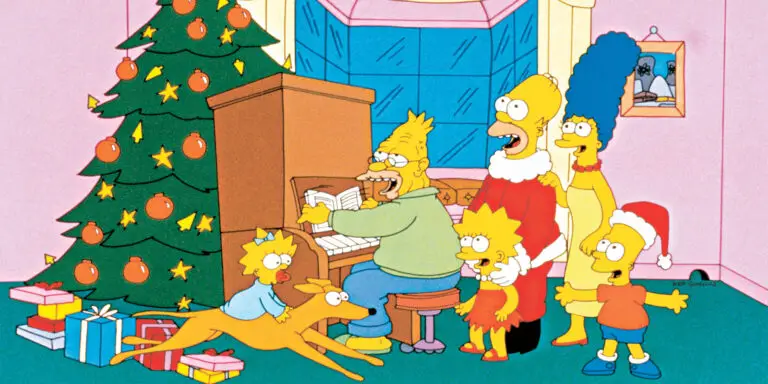On the anniversary of the first-ever episode of The Simpsons, I take a deep dive into the nuances, background details and long-term impact.
It was 30 years ago, but I still remember the day I saw the first episode of The Simpsons. I was at my friend Jared’s house and he told me about this cartoon he’d recorded of something called FOX. He popped the VHS tape into his VCR and we sat there, watching the show. I was mesmerized. Yes, I’d seen cartoons before. I was 10 years old; I’d watched countless cartoons by that point. This was a cartoon… but it wasn’t. The animation looked different. The characters were different. The plot was different. The dialogue was different. Even at that young age, I knew I was watching something different.
It’s wild to sit here looking back on Simpsons Roasting on an Open Fire now, in 2020. As much as I knew I was watching the epoch of something great in 1989, I’m not sure I quite realized just how big of an impact it would make. In 1989, I didn’t know The Simpsons would become the first animated prime time series on network TV since The Flintstones ended in 1966 — and would open the door for too many future animated prime time series to count. I didn’t know The Simpsons would define a generation, both embracing and steering the cynicism of the 1990s. I didn’t know The Simpsons would change TV and pop culture forever, giving fresh eyes to how TV families could interact, what characters could say and do, how entire worlds could be built.
I didn’t know The Simpsons would so greatly influence my sense of humor, how often I’d quote it over the next three decades, how it would become my primary force of pop culture for the rest of my life. I also didn’t know that, 31 years later, it would still be on the air but I wouldn’t be watching it anymore. That eventually, as it grew long in the tooth, the generations of comedy it would influence and spawn would eventually surpass it in the battle for leisure time and mind share. I didn’t know.
What I did know was that, in that moment, I was watching something I wanted to watch again and again.
And I would.
1 | It’s called “The Simpsons Christmas Special” on the title screen
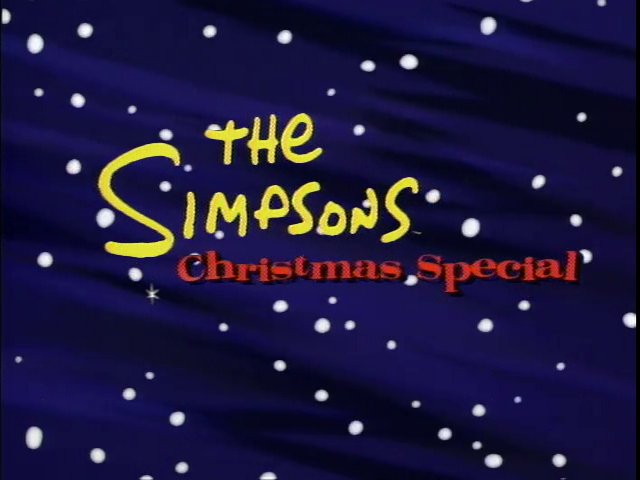
There’s no standard Simpsons opening credits sequence for this episode, just a title on screen: The Simpsons Christmas Special. Apparently that was supposed to be the title; Simpsons Roasting on an Open Fire came up when the show needed a less generic title. Which is probably a good thing, considering just how many Christmas specials The Simpsons would eventually have. (0:06)
2 | The first Simpsons sign has two nuanced details
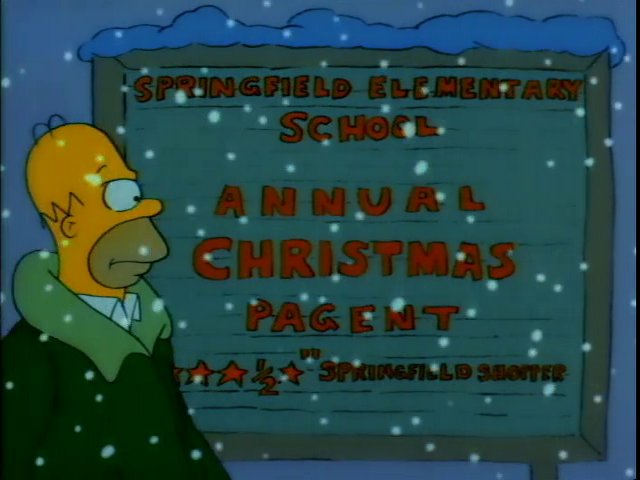
The Simpsons defined the “funny background sign” gag — so much so that other successful animated series like South Park and Family Guy rarely try to make their background signs funny, knowing they can’t hit the Simpsons standard. The main joke of the school sign is that the local newspaper reviewed the school’s Christmas pageant and gave it a star rating. The more subtle joke? The school misspelled the word “pageant.” (0:19)
3 | The first appearance of Ralph features a tiny hint of the Ralph to come
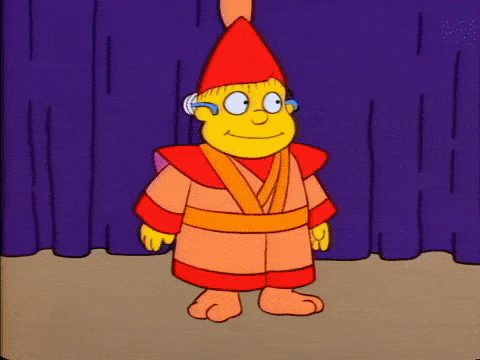
Ralph speaks during the 2nd grade class’s pageant presentation. His voice sounds only a tiny bit like it will down the road, but he’s still Ralph — which means his presentation can’t go perfectly smooth. In this case, it’s when one of the eyes on his glasses falls out, shocking the audience. (1:17)
4 | Lisa’s, um, pants situation
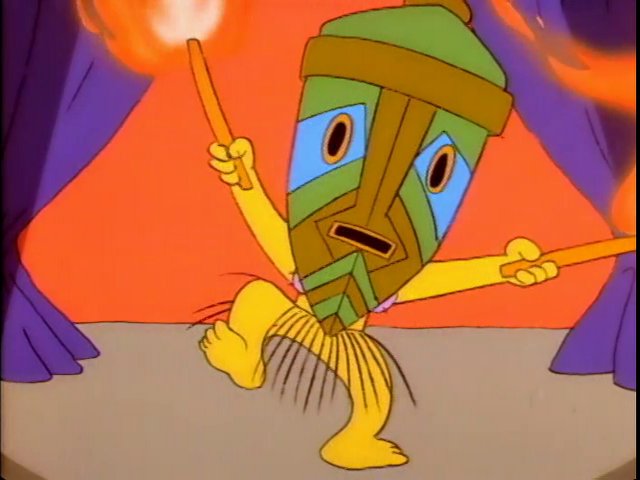
Although Simpsons Roasting on an Open Fire was the first episode that aired, it was actually the eighth episode produced. It’s clear they were still working out the kinks and rough spots in these earlier episodes, and there’s one glaring one. As Lisa does her South Seas Christmas dance (cultural appropriation that would certainly horrify 2020 Lisa, for what it’s worth), it looks like she’s not wearing pants. According to the producers’ commentary, the animators in South Korea just kinda forgot to color them in. (1:40)
5 | The pony thing
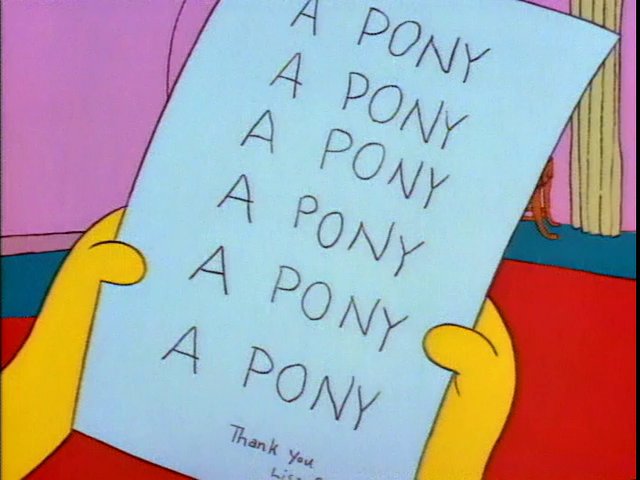
It’s just the first episode of the show, but they dive right into Lisa’s obsession with ponies. That arc would pay off a few seasons later in an episode called Lisa’s Pony — an episode widely regarded as one of the worst of the “golden” first decade of The Simpsons. Fortunately for all parties, Lisa’s pony obsession would be phased out after that. (3:52)
6 | The Irving Zitofsky background joke
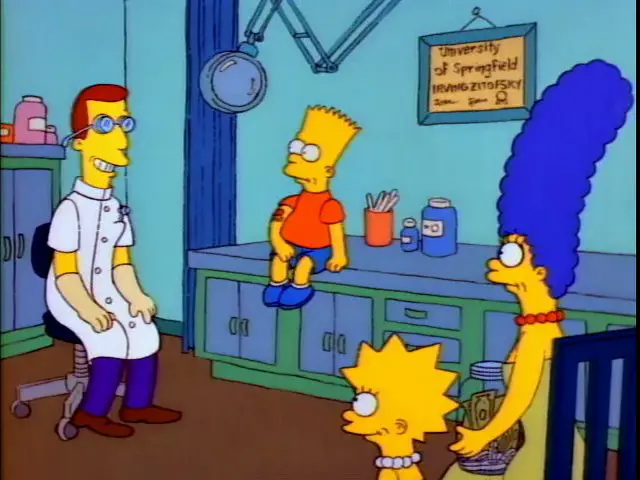
Here’s something quite monumental in retrospect. After Bart gets two-thirds of a tattoo and Marge rushes him to the doctor to have it removed, we see the dermatologist’s diploma on the wall with his name: Irving Zitofsky. The diploma isn’t on screen long. The camera doesn’t focus on it. No one ever says the name. I’m not sure it was even legible on the standard household TVs of 1989.
The joke is a total background joke. And I’m reasonably certain that was something that had never been done on television in earnest before this moment. If there was a joke, it was sold as a joke, whether via a laugh track or, at least, a camera zoom. Not here. Irving Zitofsky could be the first throwaway background joke in TV history. (7:37)
7 | “I’m Bart Simpson, who the hell are you?”
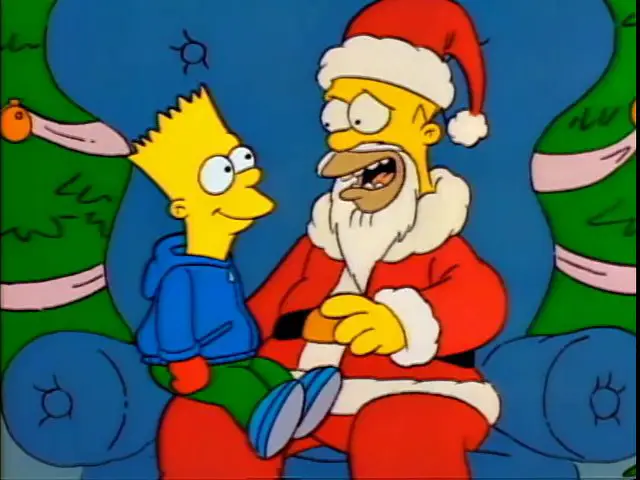
And speaking of revolutionary moments, hearing a sassy kid drop an h-bomb on TV was, most likely, the seminal moment when people realized they were watching a brand new era of animation. (14:40)
8 | Breaking the fourth wall
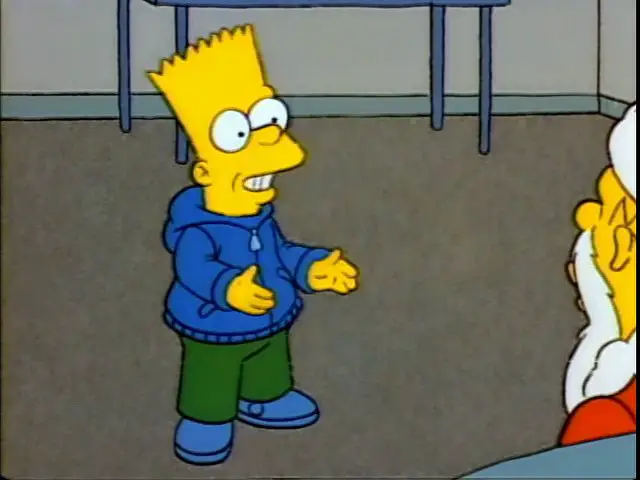
Bart gives a inspirational speech in this episode as he encourages Homer to bet their Christmas money at the dog track. (That plot alone, by the way, was mind blowing in 1989.) In the speech, he discusses how TV has taught him that Christmas miracles happen.
“If TV has taught me anything, it’s that miracles always happen to poor kids at Christmas. It happened to Tiny Tim, it happened to Charlie Brown, it happened to the Smurfs, and it’s going to happen to us!”
The Simpsons would make meta commentary and breaking the fourth wall a recurring feature in the series; again, that simply wasn’t something that was done on TV up until that point. (16:29)
9 | The Happy Little Elves
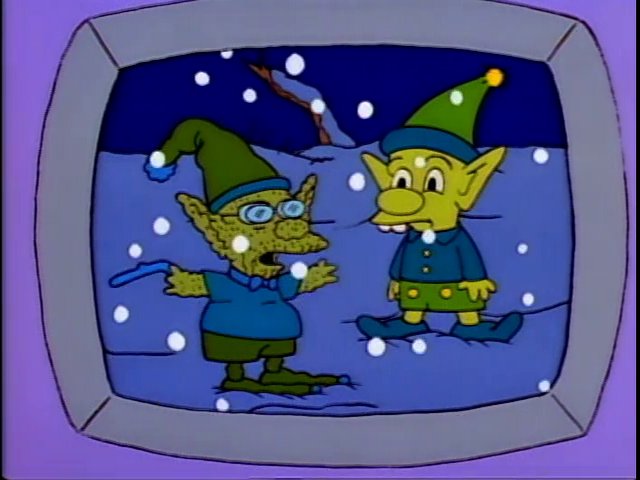
I’d basically forgotten about Lisa’s favorite show, The Happy Little Elves, which are featured in this episode. Man, between the pony thing and the Elves, they really didn’t give Lisa much to work with in the early stages of this show. (And let’s not forget that we’re only a few episodes away from meeting Bleeding Gums Murphy, another albatross for Lisa.) (16:50)
10 | The funniest line in the episode
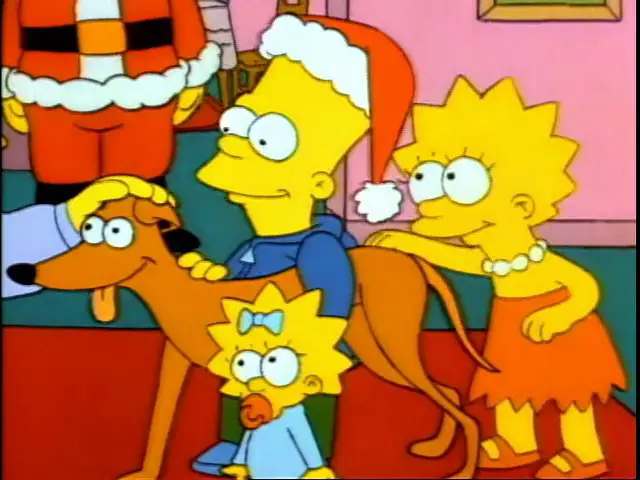
Looking back at Simpsons Roasting on an Open Fire and, really, much of season one of The Simpsons, you realize that while the episodes are classics, they aren’t actually all that funny. They’re good, and they were funny at the time, but nowhere close to the standard The Simpsons would hit in the future. My pick for the funniest line in the episode is one I didn’t even remember going in.
Near the end of the episode, when Homer and Bart bring home Santa’s Little Helper (after they adopt him when he loses the dog race), Bart gets in a line about the family’s new dog: “And if he runs away, he’ll be easy to catch!”
Like any good comedy, the show doesn’t dwell on that line or punctuate it. It almost feels like a throwaway. But it’s really good. (21:48)
11 | The epilogue.
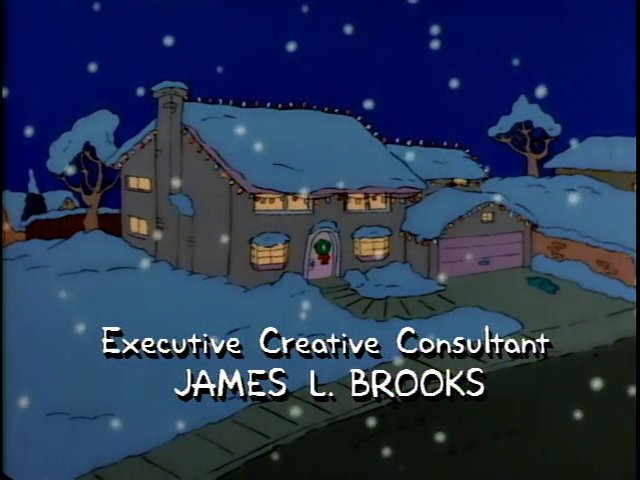
The episode ends with the extended Simpsons family gathered around the piano, singing Rudolph the Red-Nosed Reindeer. Bart and Lisa’s interjections make Homer progressively angrier as the camera pulls away from the exterior of the house, and the episode ends with Homer passing his boiling point and Bart making choking sounds. So I guess the choking bit debuted in the premiere episode. Had no idea! It’s always great learning something new about a 31-year-old episode of your favorite TV show, even if that “something” is its running child abuse gag. (23:06)
